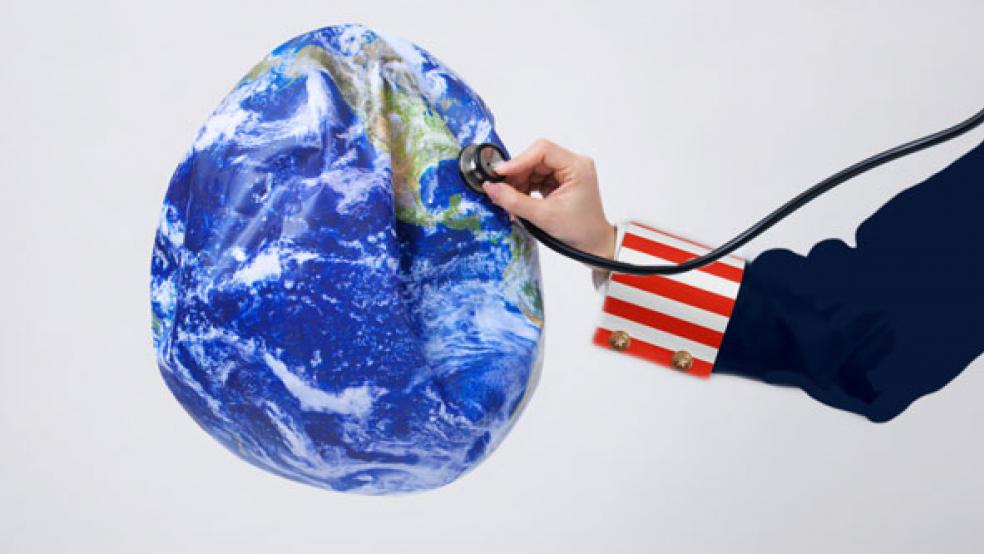After delivering a speech to the Economic Club of New York last week, Federal Reserve Board Chair Janet Yellen was asked how the Fed would react if the economy suddenly experienced a spike in inflation.
Yellen made all the right assurances about the Federal Open Market Committee watching indicators closely. But she also made it clear that she is much more worried about the prospect of inflation being too low, rather than too high.
Related: Report Card on Fed Policy During the Great Recession
In her prepared speech, she had already outlined her concerns about what might happen if the U.S. were to slip into deflation. “The limited historical experience with deflation shows that, once it starts, deflation can become entrenched and associated with prolonged periods of very weak economic performance,” she said.
So, given that the Fed chair appears to believe deflation is a bigger worry than inflation, should we be worried that the U.S. is on the brink of a spate of falling prices? The short answer is, no, we shouldn’t. But that doesn’t mean we have nothing to worry about.
“I don’t think that the U.S. is very close to deflation,” said David Wessel, director of the Hutchins Center on Fiscal and Monetary Policy at the Brookings Institution. “The economy is getting stronger, and if that were going to happen, you’d think it would have happened by now, when unemployment was higher.”
However, economists and other experts say Yellen’s real point was that persistent periods of very low inflation – called disinflation – can have be extremely damaging to the economy as well.
Related: Who’s to Blame for the Power Shift at the Fed?
“There’s nothing particularly magical about going over the zero line,” – meaning passing from very low inflation to very low deflation, said Josh Bivens, director of research and policy at the Economic Policy Institute in Washington. “While we might not ever cross that zero line in the U.S., we’ve already gone down from 2 percent to 1 percent.”
And persistently low inflation has plenty of negative effects that are only different in degree, not in kind, from those we’d see in a deflationary environment.
For one, low inflation affects the real-world debt burden on people who have long-term fixed rate loans, such as mortgages. A loan may require a fixed monthly payment, but the amount of purchasing power that payment represents falls as inflation rises. And because wages tend to rise as prices do, lower inflation also means borrowers see smaller gains in their paychecks, further limiting their spending ability.
Low inflation also raises real interest rates. If an investment provides a rate of return of 4 percent, but inflation is running at an annual rate of 2 percent, the real rate of return on the investment is 2 percent. But if inflation falls to 1 percent, that means the real rate of return increases by half, to 3 percent. This creates a greater incentive to save, meaning that it reduces the amount of money people will spend. This, in turn, can put downward pressure on economic growth.
Related: Yellen Says the Only Sure Thing Is Uncertainty
Bivens said he believes the point Yellen was trying to make is that “the real problem in the economy is slack demand keeping prices depressed.”
Wessel, of the Hutchins Center, said that if there is any place that ought to be concerned about deflation in the near term, it’s the Eurozone, where inflation is hovering around 0.5 percent, and unemployment is much higher than in the U.S.
“There’s more of a worry that Europe could stumble into deflation,” Wessel said, because the European Central Bank has been far less aggressive than the Fed in its monetary policy.
European deflation would be a major problem for the U.S., because the Eurozone is one of the world’s largest markets for American goods.
Related: Unemployment Shows We’re Getting Worse at Economic Recoveries
In a recent interview with Le Monde newspaper in Paris, Benoît Cœuré, a member of the executive board of the European Central Bank, said that persistent low inflation is a major concern for European central bankers.
In assessing the global economy, Cœuré pointed to persistent high unemployment in the Eurozone and concerns about Americans dropping out of the workforce. “To this must be added the deleveraging by households and businesses, which is weighing on consumption and investment,” he said, “and other factors, such as the slowing of China’s economy, which is having a dampening effect on energy commodity and food prices, as well as the decline in energy prices, which is linked in part to the exploitation of shale gas in the United States. We need to know whether these developments are sustainable. All the major central banks, and not just the ECB, are asking themselves this question.”
Related: Senators Warn GAO Not to Break the Banks
Because of its structure, the Eurozone presents a really complex picture when it comes to deflationary pressures. With low inflation, and no ability to ease their debt burden by devaluing their own currency – all the debts incurred are in Euros – countries such as Spain are being forced into what economists call an “internal devaluation.”
“All the adjustment has to happen with domestic prices – Spanish prices have to fall relative to German prices,” said Bivens. “So, wages and prices fall.”
Should Europe enter a deflationary spiral, the effects wouldn’t be limited to their domestic economies. They would also be felt in the U.S. in the form of demand for U.S. goods being even further reduced — just about the last thing an economy struggling through a painfully slow recovery needs.
Top Reads from The Fiscal Times





